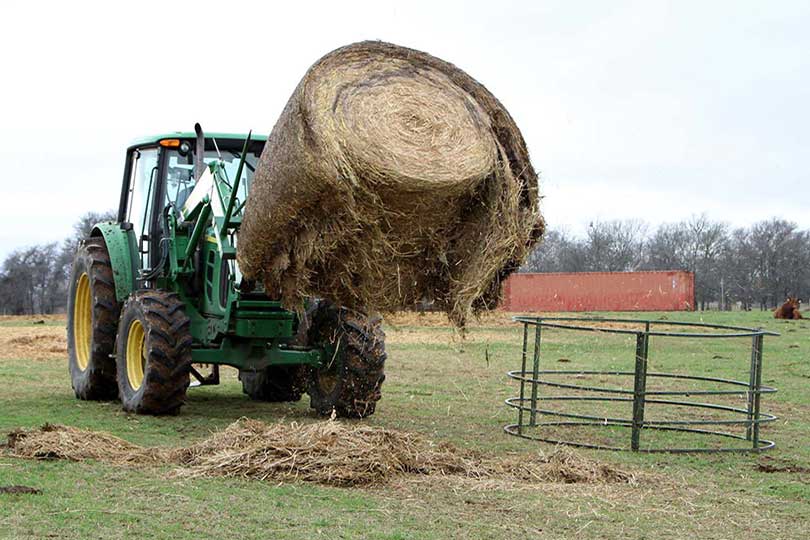As winter approaches, ranchers are preparing to deliver hay and winter feed to their herds. And cattlemen are looking for ways to reduce expenses on their winter feed bill. A solution could be a new bale feeder design or a new feeding plan may need to be implemented.
According to Drovers, one pound of waste per cow per day can accumulate over a four-month winter feeding period, and add $5 to the bill.
Over the last decade, hay production has decreased 11 percent, while hay prices have gone up 77 percent, according to the U.S Department of Agriculture National Agricultural Statistics Service.
Ranchers should evaluate ways to decrease waste during feed delivery and the type of bale feeder being used, according to Drovers.
A study by Moore and Sexten (2015) analyzed the effect of bale feeder design on hay waste at the University of Missouri Agriculture Experiment Station. They evaluated open bale feeders, tapered bale feeders and cone bale feeders with sheeting on lower and upper sections. They also evaluated two different types of forage: alfalfa haylage bales and fescue hay bales.
Through the study, they were able to determine that cone feeders with fescue hay bales have the least waste at 8.9 percent. Tapered feeders have a 13.6 percent waste total. And open feeders had the greatest waste total at 19.2 percent. Feeder design didn’t impact the alfalfa haylage waste totals.
Cone bale feeders resulted in 35 percent less waste than tapered bale feeders, according to Drovers. Lower section sheeting on tapered bale feeders helped reduce waste by 29 percent compared to open bale feeders with no lower section sheeting.
The study also evaluated the impact stocking density and the size of bales can have on forage waste. Stocking density could potentially decrease waste by increasing competition around bale feeders and reduce the amount of time cows spend entering and exiting the feeder.


You forgot to mention bale un-rollers which eliminates almost any wastage.
Don’t forget bale unrollers
Although I am for new ideas in the hay saving area. Your story missed the mark.
The key to stopping hay waste is not in feeder design but in storage.
Look at the bale in your story.
It is from storing directly on the ground that caused the most waste.
If you store on a pallet it is not near as bad.
But I am just a farmer not a university with big grant money to spend.